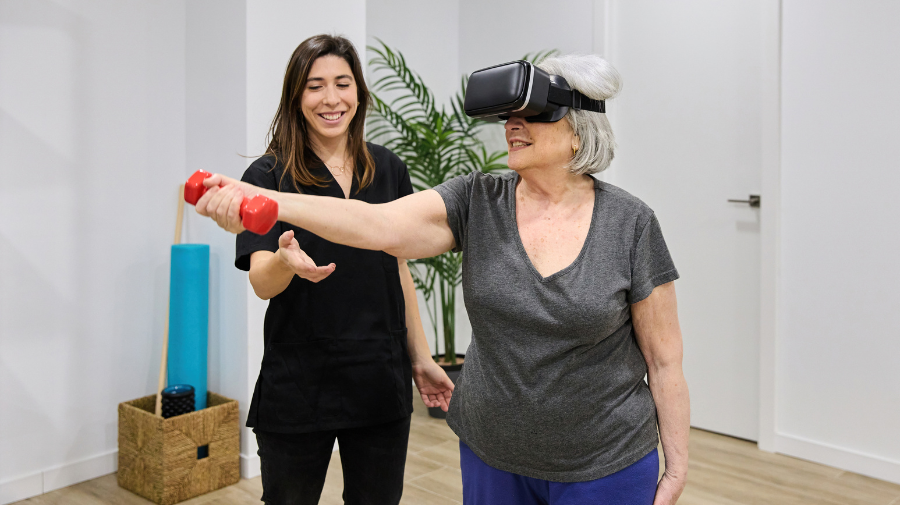Most common SLP assessment tools

Speech therapists are an important part of a child’s support system. As a therapist, you help to identify the need for speech therapy services and ensure that the child gets the precise assistance they need. To accomplish this, you rely on assessment tools and techniques to inform and back up your recommendations. If you’re like most SLP therapists, you’re always looking for effective SLP assessment tools to use with your clients. In this post, we’re sharing a process to use when evaluating tools and some of the most popular tools and techniques for evaluating children.
Process for choosing pediatric SLP assessment tools
Typically, your process will start with identifying the suspected area of disability in your client — language function, hearing, etc. This will give you a beginning point for choosing assessment tools and techniques.
Now it’s time to select the tools you’ll use for a comprehensive assessment. Because you’re required to use more than one test in order to demonstrate eligibility, it’s a good idea to select several that you believe would be helpful for the specific patient. Be sure to consider test biases and their potential impact on results. Behavioral considerations can also impact results as there may be compliance issues that need to be addressed. Different tactics can be helpful in these cases, including breaking assessments into smaller timespans, offering positive reinforcement, or using even informal assessments like classroom observations, language samples, etc.
There may also be additional considerations for assessing students who speak English as a second language. The assessment results will be most effective when students are assessed in their first language, and an interpreter may be needed in order to assist. To meet eligibility for speech-language impairment, a student must exhibit language delays in their primary and secondary languages.
List of common SLP assessment tools
You have many assessment tools to choose from, including standardized tests as well as techniques that can be used to supplement the assessments. Here are some of the popular ones that may be ideal for your client’s needs.
Standardized assessments
Standardized assessments are the cornerstone of the tools used by an SLP to determine the presence of a disability and the severity.
CELF-5
The Clinical Evaluation of Language Fundamentals (CELF) assesses a student’s communication and language skills in multiple contexts to identify language disorders, to describe the nature of the disorder, and to support planning for intervention or treatment. It is a comprehensive and flexible assessment procedure containing a number of tests that can be administered independently or in combination. The age range for this assessment is 5 to 22 years.
PLS-5 English
This assessment evaluates language development and identifies a language delay or disorder. It works by identifying receptive and expressive language skills in various areas, including play, vocal development, attention, concepts, language structures, and others. The PLS-5 assesses strengths and weaknesses to determine the presence and the type of language disorder, to identify interventions, and to evaluate eligibility for services. It is designed for use with children from birth through age 7.
Bayley-III
The Bayley Scale of Infant and Toddler Development (Bayley-III) assesses the developmental functioning of children ages 1 to 42 months. It is used to identify suspected developmental delays in children to assist with planning appropriate interventions. This assessment can also be used to help understand a child’s strengths and weaknesses in five developmental domains including motor, adaptive behavior, social-emotional, cognitive, and language. It can also help with monitoring progress during intervention. This assessment includes scales administered by the clinician with the child as well as two that are completed by the primary caregiver. It offers flexible administration to accommodate a child’s age and temperament.
GFTA-3
The Goldman-Fristoe Test of Articulation is used to measure the articulation of consonant sounds and to determine the types of misarticulation. Entertaining images are used to prompt responses that sample major speech sounds in the initial, medial, and final positions, and suggested cues help elicit spontaneous responses. The age range for this assessment is 2 to 21 years.
DAS-II
The Differential Ability Scales assessment (DAS-II) assesses the cognitive abilities that are important for learning. It is used to identify intellectual disability and learning disability in children from ages 2 to 18. It is especially helpful to evaluate Spanish-speaking children as well as deaf or hard of hearing children. The DAS-II identifies a child’s strengths and weaknesses to determine appropriate IEP goals and intervention strategies and to assist with progress monitoring.
Techniques
You can also use various techniques to effectively complement and enhance the results of standardized testing assessments. Here are several that you may find helpful.
- Ethnographic Interviewing — This technique uses open-ended questions with restatement and summarizing to obtain information from the child, teacher, family members, or others. It is effective for gathering knowledge on views, including cultural and linguistic variables.
- Analog Tasks — This technique involves observing the child in staged communication contexts mimicking real-world scenarios, including peer group activities.
- Naturalistic Observation — With naturalistic observation, you observe the child in daily social settings with others, including in the home and in academic settings.
- Systematic Observation and Contextual Analysis — This technique involves observing the student across a variety of contexts to gather descriptions of language function and to identify problem areas that play a role in communication abilities.
- Language Sampling — Using language sampling, you elicit spontaneous language in a variety of contexts including conversation, free play, narration, and expository speech. It’s designed to complement data gathered from standardized language assessments.
A framework for choosing SLP assessments
We hope you’ve discovered a few new tools to use in your speech therapy assessments. While there are many SLP assessment tests and techniques to choose from, if you build out a selection of tools that you find most helpful for the children you work with, narrowing down your options will be more manageable. At the same time, assessments are always being updated, so it’s worth revisiting.






